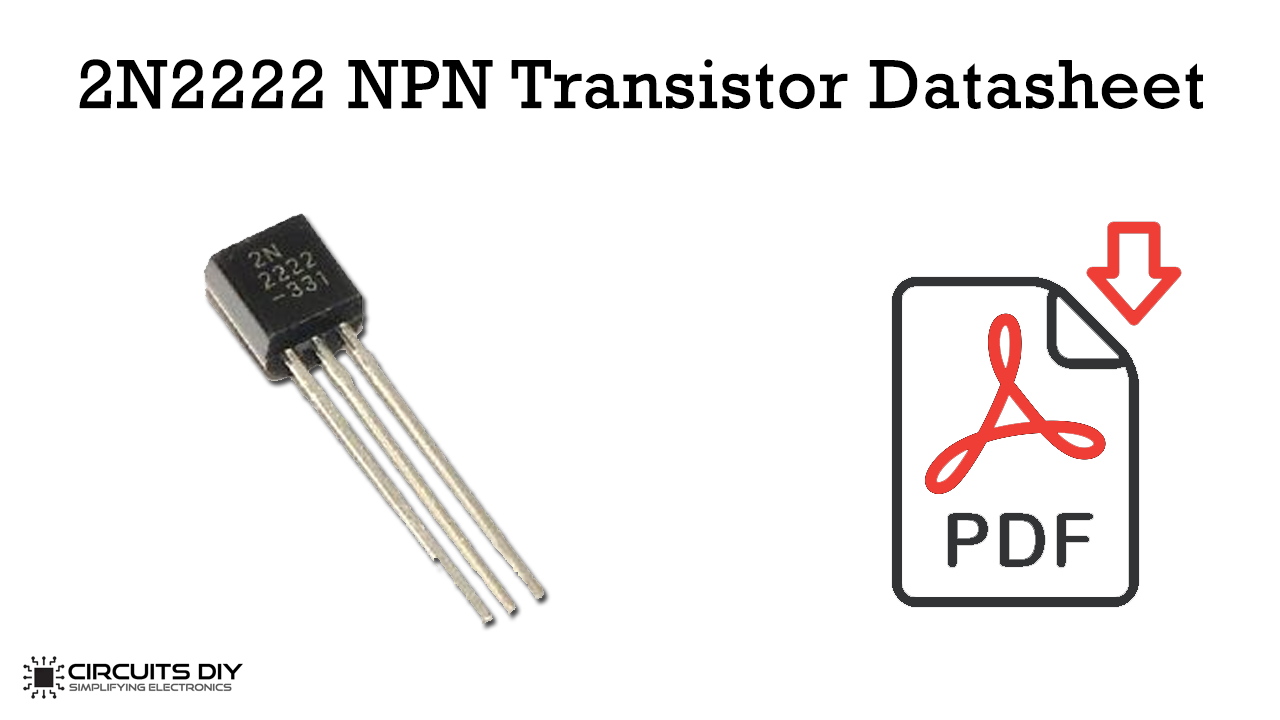

N2222 transistor datasheet pdf series#
The idea illustrated in your diagram, where the LED and a current-limiting resistor are placed in series in the collector circuit, is a common (and reasonable) approach. This is your circuit drawn as a schematic to read for understanding rather than as a wiring diagram (which is more about getting everything connected and not so much for understanding it.)

Hope all is correct, the last time I did these calcs was over 40 years ago. The 200 Ohm resistor will limit the LED-C-E current to 14.5 mA. This is less than the 600 mA Ic allowed by the data sheet. Use a standard 1.5k (1.47k) Ohm which will allow 2.67 mA Base current which means the Ic current will be ~ 534 mA (with Hfe =200). A value of 430 Ohms would be ~ 10 mA Base current, but. That is why you MUST PUT a current limiting RESISTOR in series with the BASE. This circuit has no reverse voltage, BUT with 5 V on the Base and ~ 0.7 V drop across the B-E junction, you will have 4.3 V into a short circuit (~ 0.05 Ohms for wiring) which is 56 Amps / 369 Watts! Neither the transistor or the power supply will last more than a microsecond. The Base Emitter junction is a small diode with a reverse breakdown voltage specified at 6 V. This means that if you have a current flow of 1 mA in the base-emitter, there will be a current flow of 200 mA through the collector - emitter. On the ON Semi Datasheet, see hfe on page 2 for the gain, which is between 50 and 375 for this transistor. A small current from the Base to Emitter causes a large current from the Collector to Emitter. However, I had the original circuit built improperly there, and I'm now wondering if the 2N2222 can take 5 V on its base pin (according to the datasheet).īi-Polar transistors multiply current. * Note This question is directly related to Is it possible to use a NPN BJT as switch, from single power source?. I'm wondering because in my other (referenced question) circuit the transistor became very hot with only 5 V - but that may have been due to being wired improperly, I'm not sure.

Does that mean I should be able to drive a circuit on the collector-emitter side that has up to 40 V on it? From reading the datasheet (below) would you expect that to be too much?Īlso, I see that the secondary (output) circuit of collector-emitter can supposedly take up to 40 V(?). Simulate this circuit – Schematic created using CircuitLabĪccording to the datasheet the emitter-base maximum voltage is 6.0 V. I've been struggling with understanding datasheets for transistors.
N2222 transistor datasheet pdf how to#
I have created the following circuit to better understand how to use a transistor as a switch*.


 0 kommentar(er)
0 kommentar(er)
